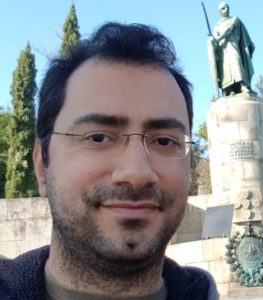 On March 17 at 15:00, Manuel dos Santos Dias from Peter Grünberg Institut and Institute for Advance Simulation, Forschungszentrum Jülich, Germany will give us a seminar entitled :
On March 17 at 15:00, Manuel dos Santos Dias from Peter Grünberg Institut and Institute for Advance Simulation, Forschungszentrum Jülich, Germany will give us a seminar entitled :
Spin dynamics and transport at the nanoscale
Place : The seminar will be given via skype (ask link to alain.marty@cea.fr )
abstract : In this talk, I will cover some highlights of my research on computational materials modelling of magnetic nanostructures. First, I will discuss magnetism at the atomic limit, in connection to scanning tunnelling microscopy and spectroscopy experiments. Single atoms can be manipulated and assembled into various nanostructures on surfaces, with fine control over their magnetic interactions, and probed and stimulated by tunnelling electrons. This allowed us to map the spatial dependence of the Dzyaloshinskii-Moriya interaction, to realize magnetic bistability in small clusters, and to explore the interplay between magnetism and superconductivity. Then I will turn to the magnetic properties of magnetic / heavy metal bilayer heterostructures. I will explain how we describe the magnon spectrum in ferromagnets and how this is generalized to antiferromagnets and more complex magnetic structures, and demonstrate that magnetic skyrmions have hidden orbital properties that could be used for their experimental classification. Lastly, I will briefly mention some results on AC transport properties and their relation to ferromagnetic resonance, and on how to obtain electronic and magnetic properties at finite temperature within density functional theory.
Bio : Manuel dos Santos Dias is a senior post-doctoral researcher at the Forschungszentrum Jülich.
He did his PhD at the University of Warwick, after which he joined the newly-formed group of Prof. Samir Lounis at the Forschungszentrum Jülich. His research focuses on first-principles modelling of magnetic materials, from single atoms to clusters to thin films and bulk materials, and on their ground state and dynamical properties, in close connection to experimental investigations.




